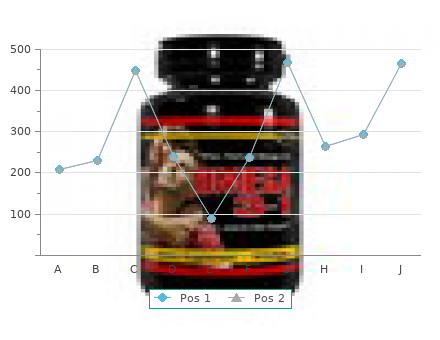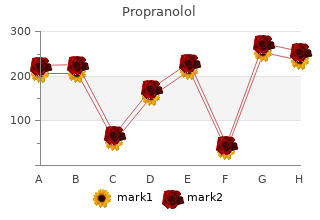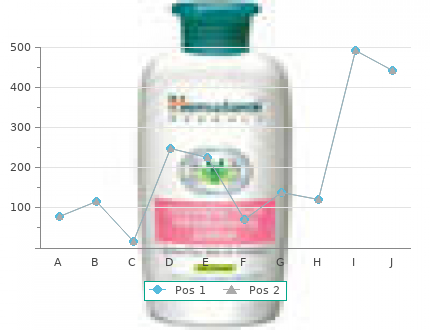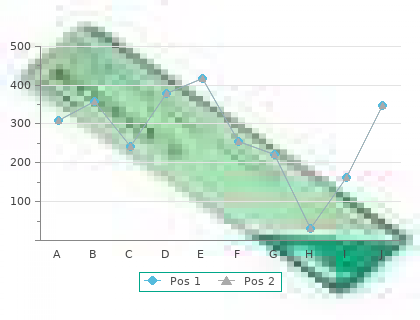Propranolol
2018, DePaul University, Aila's review: "Propranolol 80 mg, 40 mg, 20 mg. Only $0,24 per pill. Order Propranolol.".
Evolving characteristics of toxoplasmosis in patients infected with HIV-1: clinical course and Toxoplasma gondii-specific immune responses purchase propranolol 40 mg without a prescription cardiovascular disease epidemic. Toxoplasmic encephalitis in HIV-infected persons: risk factors and trends generic 40mg propranolol fast delivery cardiovascular disease books. Katlama C, De Wit S, O’Doherty E, Van Glabeke M, Clumeck N. Treatment of central nervous system toxoplasmosis with pyrimethamine/ sulfadiazine combination in 35 patients with the AIDS. Timing of reconstitution of toxoplasma gondii-specific T-cell responses in AIDS patients with acute toxoplasmic encephalitis after starting HAART: A prospective multi-center longitudinal study. Discontinuation of primary and secondary Toxoplasma gondii prophy- laxis is safe in HIV-infected patients after immunological restoration with highly active antiretroviral therapy: results of an open, randomized, multicenter clinical trial. Thrice-weekly sulfadiazine-pyrimethamine for maintenance therapy of toxoplasmic encephalitis in HIV-infected patients. Toxoplasmosis of the central nervous system in AIDS. Comparison of high and low doses of Trimethoprim-Sulfamethoxazole for primary prevention of toxoplasmic encephalitis in HIV-infected patients. Efficacy of pyrimethamine/sulfadoxine in the prevention of toxoplas- mic encephalitis relapses and PCP in HIV-infected patients. Prospective randomized trial of trimethoprim/sulfamethoxazole versus pyrimethamine and sulfadiazine in the treatment of ocular toxoplasmosis. Reactivation of retinal toxoplasmosis despite evidence of immune response to highly active antiretroviral therapy. Randomized trial of trimethoprim-sulfamethoxazole versus pyrimethamine- sulfadiazine for therapy of toxoplasmic encephalitis in patients with AIDS. Randomized trial of dapsone and aerosolized pentamidine for the prophylaxis of pneumocystis carinii pneumonia and toxoplasmic encephalitis. Cotrimoxazole is effective as primary prophylaxis for toxoplasmic encephalitis in HIV-infected patients: a case control study. In many countries, seroprevalence is around 50–70%, and above 90% in MSM. In severely immunocompromised indi- viduals (CD4 count below 50 cells/µl), reactivation of CMV infection can lead to retinitis. In the past, CMV retinitis was a common AIDS-associated illness, leading to blindness in up to 30% of patients. It occurs mainly in untreated patients, who are often first diagnosed with HIV infection on presentation (Jacobson 2000). An inflammatory CMV retinitis, usually with severe vitritis, is also possible in the course of IRIS (see below). If CMV retinitis is not diagnosed and treated promptly, then the patient’s sight is at risk. Impairment of vision is almost always associated with lesions, which are no longer reversible even with adequate treatment. This is why CMV retini- tis remains a dangerous illness, although the prognosis has significantly improved with ART (Salzberger 2005, Thorne 2006). Other manifestations of disseminated CMV infection are rare (15%), and can affect every organ. The lung (pneumonia), esophagus (ulcers), colon (colitis) and CNS (encephalitis) are most frequently involved. The clinical signs of these CMV diseases depend on the organ affected. Diagnosis is often difficult and may only be possible on histology (Goodgame 1993). There is insufficient data on the treatment of these manifestations, so systemic therapies are usually chosen along with treatment for CMV retinitis (Whitley 1998). Newer studies have suggested that CMV infection plays a role in the pathogenesis of artery disease and that CMV-induced T cell immunopathology could contribute to HIV-associated atherosclerosis (Parrinello 2012, Sacre 2012). There is also an asso- ciation between CMV infection and altered immune reconstitution (Appay 2011, Wittkop 2013). Signs and symptoms Any visual impairment occurring peracutely or acutely, such as blurred vision or floaters – especially unilaterally – should prompt an immediate (same day, if possi- ble) ophthalmological examination of the patient. Once there is a black spot in the visual field, it will be permanent.


The effects of lansoprazole on erosive reflux oesophagitis are influenced by CYP2C19 polymorphism purchase 40mg propranolol mastercard cardiovascular group pc lawrenceville ga. Effect of CYP2C19 polymorphism on the safety and efficacy of omeprazole in Japanese patients with recurrent reflux oesophagitis propranolol 40 mg amex coronary heart attack definition. Comparison of omeprazole and histamine H2-receptor antagonists in the treatment of elderly and young patients with reflux oesophagitis. Postmarketing surveillance of rabeprazole in upper gastrointestinal peptic lesions in Japanese patients with coexisting hepatic disorders. Current Therapeutic Research - Clinical and Experimental. Risk of adverse outcomes associated with concomitant use of clopidogrel and proton pump inhibitors following acute coronary syndrome. A population-based study of the drug interaction between proton pump inhibitors and clopidogrel. The safety of proton pump inhibitors in pregnancy: a multicentre prospective controlled study. Proton pump inhibitors Page 92 of 121 Final Report Update 5 Drug Effectiveness Review Project Appendix A. Glossary This glossary defines terms as they are used in reports produced by the Drug Effectiveness Review Project. Some definitions may vary slightly from other published definitions. Absolute risk: The probability or chance that a person will have a medical event. It is the ratio of the number of people who have a medical event divided by all of the people who could have the event because of their medical condition. Add-on therapy: An additional treatment used in conjunction with the primary or initial treatment. Adherence: Following the course of treatment proscribed by a study protocol. Adverse drug reaction: An adverse effect specifically associated with a drug. Adverse event: A harmful or undesirable outcome that occurs during or after the use of a drug or intervention but is not necessarily caused by it. Adverse effect: An adverse event for which the causal relation between the intervention and the event is at least a reasonable possibility. Active-control trial: A trial comparing a drug in a particular class or group with a drug outside of that class or group. Allocation concealment: The process by which the person determining randomization is blinded to a study participant’s group allocation. Applicability: see External Validity Before-after study: A type nonrandomized study where data are collected before and after patients receive an intervention. Before-after studies can have a single arm or can include a control group. Bias: A systematic error or deviation in results or inferences from the truth. Several types of bias can appear in published trials, including selection bias, performance bias, detection bias, and reporting bias. Bioequivalence: Drug products that contain the same compound in the same amount that meet current official standards, that, when administered to the same person in the same dosage regimen result in equivalent concentrations of drug in blood and tissue. Black box warning: A type of warning that appears on the package insert for prescription drugs that may cause serious adverse effects. It is so named for the black border that usually surrounds the text of the warning. A black box warning means that medical studies indicate that the drug carries a significant risk of serious or even life-threatening adverse effects. Food and Drug Administration (FDA) can require a pharmaceutical company to place a black box warning on the labeling of a prescription drug, or in literature describing it. Blinding: A way of making sure that the people involved in a research study — participants, clinicians, or researchers —do not know which participants are assigned to each study group.

Preserving CD4 cells with cART thus decreases the incidence of lymphoma and shifts toward the favorable subtypes to the left in the diagram buy propranolol 80 mg fast delivery cardiovascular system function youtube. AIDS complications risk can also be ameliorated with cART purchase propranolol 40 mg online capillaries urdu meaning. Note that within CD4 cell strata, the ARL incidence has not changed comparing the cART and pre-cART eras. Adapted with permission from Besson et al,1 Little et al,2 and Dunleavy et al. Figure 1 provides a graphic representation of this recommend during polychemotherapy for hematologic cancer). Our concerns about adherence to cART during chemotherapy have In general, patients with CD4 counts 200 cells/mm3 are at low not been borne out. However, be based on experience from the HIV-unrelated population. Those if cART is administered with chemotherapy, we strongly recom- with lower CD4 cells (100-200 CD4 cells/mm3) also do well with mend meticulous attention to toxicity. If early-cycle dose reductions standard therapy but may require more supportive care. In patients are needed, one should consider the possibility of drug-drug with 50 CD4 cells/mm3, there is without question a higher risk interactions as the cause of enhanced toxicity and suspend cART. However, this high-risk group is not therapy dose reductions rather than removing the pharmacokinetic homogenous, and prior HIV treatment status modifies the risk offender may adversely affect cancer cure. Consultation with experts in HIV infec- tive cART suspension may be best. For example, the very real risk tion management may be key to understanding the prospects for of drug-induced pancreatitis from asparaginase is likely to be successful long-term HIV management, and this can be invaluable compounded by effects of many antiretroviral drugs that are also toward planning best cancer therapy. A first reflex may be to assign the advanced CD4 -depleted group to DLBCL and BL the end-stage AIDS end of the spectrum. Before cART, this would In the cART era, the outcome for patients with aggressive lympho- have been correct. However, those who are treatment naive are very mas who receive optimal therapy is equivalent to that of the different from those who have a long history of complicated AIDS background population, and this should be kept in mind when and highly treatment-resistant HIV. Increasingly, patients with selecting up-front treatment. In the pre-cART era, in an attempt to advanced CD4 cell depletion are treatment naive. The AIDS reduce toxicity, approaches such as the use of CHOP (cyclophospha- epidemic is shifting demographically to communities with disadvan- mide, hydroxydaunorubicin, vincristine, prednisone/prednisolone)– taged medical access or high HIV stigma that creates a barrier to like regimens for BL were widely practiced and resulted in dismal HIV testing and care. Estimates suggest that up to 25% of people in outcomes. Such approaches are now recognized as inadequate and 10 should not be practiced. It is critical that these patients are these communities have unknown HIV infection. For patients with approached in the same way as those with HIV-unrelated lymphoma newly diagnosed advanced HIV disease, long-term cancer-free and treated with curative intent. In addition, nearly 40 whether the patient has previously known or newly diagnosed HIV anti-HIV drugs or combinations are Food and Drug Administration infection, just as it would with any other patient. This evaluation (FDA) approved, making HIV salvage therapy more feasible. If a should include assessment of the HIV disease parameters including decision is made to recommend palliative-only cancer care, in most CD4 cell count and HIV viral load. In addition to routine tests cases, it should be based on the cancer outcome prospects rather (including assessment of hepatitis B and C coinfection), thorough than on HIV. Having observed relatively high rates of isolated CNS progression and Another important concern specific to patients with HIV is what to relapse in our HIV-infected patients, more than a decade ago, we do about cART during chemotherapy.

Intermittent topical corticosteroid/tacrolimus sequential therapy improves lichenification and chronic papules 6 more efficiently than intermittent topical corticosteroid/emollient sequential therapy in patients with atopic dermatitis generic 80mg propranolol with amex blood vessels repair themselves. Non-melanoma skin cancer in patients with atopic dermatitis treated with topical tacrolimus 40mg propranolol overnight delivery blood vessels that carry oxygenated blood. Pacor ML, Di Lorenzo G, Martinelli N, Mansueto P, Rini GB, Corrocher R. Comparing tacrolimus ointment and oral cyclosporine in adult patients affected by atopic dermatitis: a 3 randomized study. Topical calcineurin inhibitors Page 60 of 74 Final Report Drug Effectiveness Review Project Excluded publications Code Papp KA, Werfel T, Folster-Holst R, et al. Long-term control of atopic dermatitis with pimecrolimus cream 1% in infants and young children: a two-year study. Effect of pimecrolimus cream 1% on the long-term course of pediatric atopic dermatitis. Tacrolimus reduces staphylococcal colonization on the skin in Korean atopic dermatitis patients. The safety and efficacy of tacrolimus therapy in patients younger than 2 years with atopic dermatitis. Cancer concerns with topical immunomodulators in atopic dermatitis: overview of data and recommendations to clinicians. Paul C, Cork M, Rossi AB, Papp KA, Barbier N, de Prost Y. Safety and tolerability of 1% pimecrolimus cream among infants: experience with 1133 patients treated for up to 2 years. Long-term safety and efficacy of tacrolimus ointment for 6 the treatment of atopic dermatitis in children. Role of topical calcineurin inhibitors on atopic dermatitis of 6 children. Rikkers SM, Holland GN, Drayton GE, Michel FK, Torres MF, Takahashi S. Topical tacrolimus treatment of atopic eyelid disease. Rodriguez-Martin M, Saez-Rodriguez M, Carnerero-Rodriguez A, et al. Treatment of perioral dermatitis with topical pimecrolimus. Tacrolimus: the drug for the turn of the millennium? Topical tacrolimus ointment may induce skin tags in treated patients. Topical calcineurin inhibitors Page 61 of 74 Final Report Drug Effectiveness Review Project Excluded publications Code Schiffner R, Schiffner-Rohe J, Landthaler M, Stolz W. Treatment of atopic dermatitis and impact on quality of life: a review with emphasis on topical non-corticosteroids. Long-term efficacy of occlusive therapy with topical pimecrolimus in severe dyshidrosiform hand and foot eczema. Eczema herpeticum during treatment of atopic dermatitis with 1% pimecrolimus cream. Long-term safety of tacrolimus ointment in children treated for 6 atopic dermatitis. Benefits from the use of a pimecrolimus-based treatment in the management of atopic dermatitis in clinical practice. Tacrolimus ointment: a review of its use in atopic dermatitis and its 6 clinical potential in other inflammatory skin conditions. Singalavanija S, Noppakun N, Limpongsanuruk W, et al. Efficacy and safety of tacrolimus ointment in pediatric Patients with moderate to severe atopic dermatitis. Low systemic absorption and good tolerability of pimecrolimus, administered as 1% cream (Elidel) in infants with atopic dermatitis--a 6 multicenter, 3-week, open-label study. Thaci D, Steinmeyer K, Ebelin M-E, Scott G, Kaufmann R.
Propranolol
9 of 10 - Review by Y. Steve
Votes: 96 votes
Total customer reviews: 96 |



